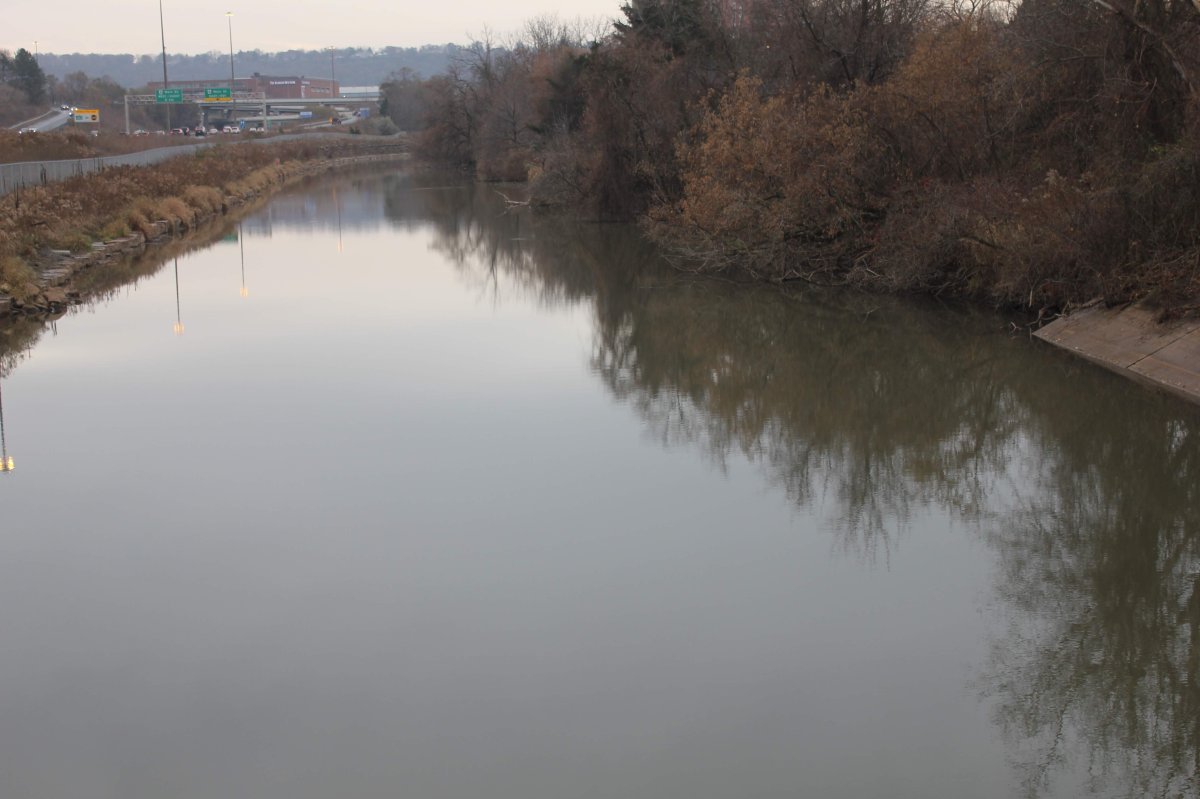Amid a deadline this week for the city of Hamilton to come up with a plan for the remediation of Chedoke Creek, a city study is suggesting against the dredging of sludge from a 24 billion-litre spill.

An update from the city’s public works department on Thursday says recent testing of the creek shows the water quality is back to a state consistent with urbanized watersheds.
The city has been providing regular updates through a private consulting agency to the Ministry of Environment, Conservation and Parks (MECP) since a 24-billion-litre spill of sewage and runoff water into the creek over a four-year period.
An ecological risk assessment from SLR Consulting says dredging the creek bottom would harm whatever wildlife still survives, adding that future sewer overflows during storms will just “recontaminate” the area.
General Manager of Public Works Dan McKinnon said the suggestion from the report is “sound advice.”
“The notion of dredging, you’re going to have unintended consequences with vertebrates possible, possible further contamination as a result of drifting and that kind of thing,” said McKinnon.
“This is the normal. And so until we find ways to make improvements with the normal, doing any focused remediation in the Blue Square probably is not the best investment.”
Meanwhile, Gord Wichert, an ecologist with SLR, added that it’s hard to determine if the bacterial pollution currently found in the creek bed actually came from the 2018 spill or from past abuse.
Going forward, the study recommends an enhanced monitoring program as the city’s response to a provincial deadline to submit remediation options for Chedoke Creek.

The city has already undertaken some investments to control combined sewage and improve effluent quality at the Woodward Wastewater and is expecting an update for the public parks committee sometime in the spring, as well as the implementation of an internal water quality program, to improve control over urban watercourses that receive discharges from City infrastructure.
A staff report is also due in the summer on potential health-related incidents that may have happened over the four years.
Chris McLaughlin, Executive Director at the Bay Area Restoration Council, which represents the public interest in the restoration of Hamilton Harbour, says the area around Chedoke Creek is “a terribly contaminated place.”
However, McLaughlin is hopeful the city is just taking a temporary “step back” to look at the larger picture of the spill and previous contamination of the waterways.
“What we would really like to see is to stand back and take a really careful look at what priorities are out there to get the biggest bang for our buck,” said McLaughlin.
“Not to ignore the problem, but rather to act very strategically and more comprehensively.”
Mark Runciman, CEO of Royal Botanical Gardens — the principal owner and the chief environmental steward of Cootes Paradise — says over the next couple of months their organization will collaborate on a report concerning the future of the two adjoining open waterways.
“It’s going to take a team effort of people getting around the table to see about protecting this wonderful watershed that we have in the Hamilton community,” said Runciman.
“So what we need to do is divert any of the water that’s on people’s properties, not to go down these silly storm sewers, but to put it in a soded area or into the garden.
“The less that goes into it, the less problems there are when it comes out.”
In late November, Ontario issued new orders requiring Hamilton councillors to come up with a plan for the remediation and future monitoring of Chedoke Creek.
The orders from the Ministry of the Environment, Conservation, and Parks also ask the city to submit a complete evaluation of the impact of four years of sewage leaking into the Creek and neighbouring Cootes Paradise.
The deadline for both reports was Friday, Feb. 14.
Just before the orders were given, McKinnon told Global News that a “glitch” with their automation process was the likely reason for the four-plus-year spill.
“There’s routine maintenance, and there have been inspections of facilities,” said McKinnon.
“These facilities are large and complex and they are often in locations that are very difficult to get to. So what ends up happening is we rely on our systems.”
Public Works said a bypass gate in the sewer overflow tank that should have been closed was open during that time period.
The Ministry of the Environment, Conservation and Parks (MECP) confirmed to Global News they were made aware of the problem in July 2018 and said they are continuing to investigate the incident, as well as advising the city on the remediation of the Creek.
“The ministry’s Investigations and Enforcement Branch is investigating the incident. While the investigation is on-going, it would be inappropriate for the ministry to comment,” said ministry spokesperson Lindsay Davidson.
“The ministry will comment on the content of the report once it has been submitted and reviewed.”




Comments